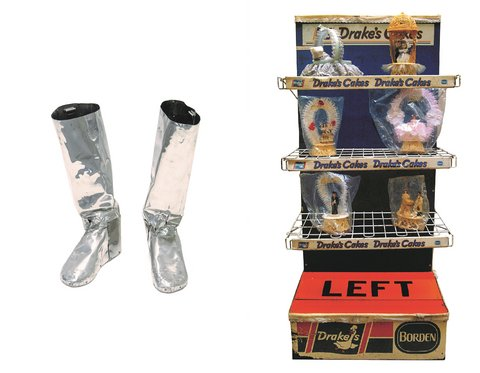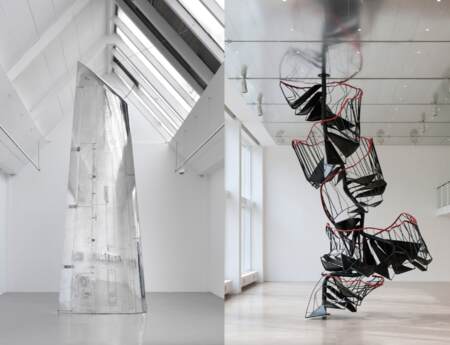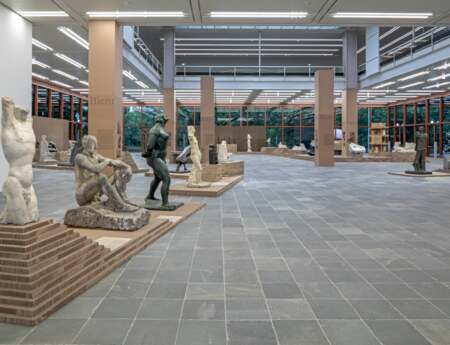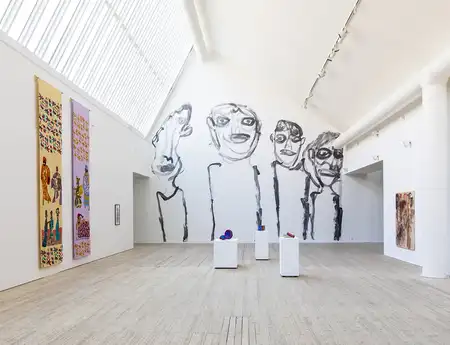Museum Ludwig, Cologne
Heinrich-Böll-Platz
50667 Cologne
Germany
Fluxus and Beyond: Ursula Burghardt, Benjamin Patterson
"Fluxus and Beyond: Ursula Burghardt, Benjamin Patterson" at the Museum Ludwig takes a fresh look at a 1960s art movement that continues to exert its influence. The exhibition focuses on Ursula Burghardt (1928–2008) and Benjamin Patterson (1934–2016), two artists who despite their involvement in the Fluxus network remained on its periphery. As a result, their work is little known today.
In the 1960s, Cologne was one of the Rhineland’s vibrant artistic centers and a meeting place for international artists. The Studio of Electronic Music of the West German Radio (WDR) was an important magnet, and the Fluxus movement took up elements of new music. Starting with musical concepts particularly influenced by John Cage, Fluxus artists developed actions and performances that merged art and life and combined diverse media. Numerous events that brought together music, literature, art, and architecture were held in the Cologne studio of German artist Mary Bauermeister. This is where Burghardt and Patterson met in 1960.
The first part of the exhibition focuses on the early days of Fluxus in Cologne, Wiesbaden, and Wuppertal with a view of concurrent events in Paris and New York. It also examines the social and historical context of Cologne during the postwar period. With its ruined lots, reconstructed buildings, and prestigious new structures, the city was marked by both repair and suppression. Nazi ideology did not suddenly vanish from postwar West German society. In 1959, hundreds of antisemitic attacks occurred throughout Germany, including one on the newly reconstructed synagogue on Roonstrasse in Cologne.
In the second and third parts of the exhibition, individual sections are devoted to the work of Burghardt and Patterson.
Benjamin Patterson, a trained musician from Pittsburgh, moved to Cologne in 1960, where he produced a considerable number of compositions. Together with George Maciunas, he organized the Fluxus Internationale Festspiele Neuester Musik festival in Wiesbaden in 1962. This event is regarded as the birth of Fluxus. The “deep-rooted alienation” Patterson experienced in the white-dominated art world caused him to interrupt his career for twenty-two years and take a salaried job in the United States. He did not return to art-making until 1988. The exhibition focuses on this later creative period.
➤ A complete biography on the life of Benjamin Patterson can be found here.
Ursula Burghardt, who was born in Halle an der Saale, fled to Buenos Aires in 1936 with her parents to escape the persecution of Jewish people in Nazi Germany. In Buenos Aires she later studied painting and printmaking, and from 1952 to 1953 she studied sculpture in Paris. Burghardt had already participated in many exhibitions in South America when she moved to Cologne in 1957 with her husband, composer Mauricio Kagel. She was greatly affected by the experience of living as a Jew in West Germany, which at the time rampantly denied its involvement in the Holocaust. Between 1960 and 1965, family circumstances compelled Burghardt to forgo a studio for an extended period and take a break from art-making to care for her two daughters.
➤ A complete biography on the life of Ursula Burghardt can be found here.
Patterson maintained close ties with Fluxus during his long hiatus, and his pieces continued to be performed, frequently with his participation. Although now recognized as one of the cofounders of Fluxus, his work has long been ignored. Burghardt, on the other hand, was in close contact with Fluxus artists but never became a member of its inner circle. In 1965, following her hiatus, Burghardt turned away from abstract sculpture and began recreating everyday items using metal and fabric. By substituting their usual materials, she achieved an alienation that resulted in defamiliarized objects. Burghardt’s work and its subversive and performative significance have not been adequately appreciated until now.
➤ You can find the exhibition booklet here: in English / in German
"Fluxus and Beyond: Ursula Burghardt, Benjamin Patterson" will be accompanied by a comprehensive program of concerts, readings, and workshops.
Curator: Barbara Engelbach
Curatorial advisors: Annemone Christians-Bernsee (NS-Dokumentationszentrum Köln, Cologne) and julia elizabeth neal (History of Art Department, University of Michigan)
The exhibition is generously supported by the Ministry of Culture and Science of the State of North Rhine-Westphalia and the Peter and Irene Ludwig Foundation. Further funding comes from the Friends of the Wallraf-Richartz-Museum and the Museum Ludwig e.V., Miltenyi Biotec and the BEATRIX LICHTKEN STIFTUNG.



